Unlock the power of webshop SEO: attract customers effortlessly

If you own a webshop, you want to attract as many customers as possible. Webshop SEO is a way to bring in new visitors for free. By fine-tuning your SEO settings, you can effortlessly draw customers through search engines like Google. Here’s how to get started.
- Webshop SEO: what is it and why should you use it?
- How SEO works: follow these four steps
- How SEO works behind the scenes
- ➡️ Crawling and indexing
- ➡️ Algorithms and ranking
- ➡️ Result display and optimization
- ➡️ Local SEO and personalization
- Webshop SEO: tips to use right away
- ✓ Tip: start with keyword research
- ✓ Tip: create the right page layout
- ✓ Tip: make your webshop pages SEO-friendly
- ✓ Tip: use Google My Business
- ✓ Tip: Start a blog
- ✓ Tip: build an internal link structure
- ✓ Tip: build a mobile-friendly webshop
- ✓ Tip: choose only top-quality hosting
- ✓ Tip: dare to analyze and adjust
- Webshop SEO: mistakes you must avoid
- Frequently asked questions about improving webshop SEO
Webshop SEO: what is it and why should you use it?
Before you can understand why webshop SEO optimization is so important, it's essential to learn the basics of SEO.
SEO, or Search Engine Optimization, is a key aspect of digital marketing. By applying certain SEO principles, you can improve the visibility of your webshop in search engines. Optimization means making improvements to help your site rank even higher.
Using SEO, the goal is to position your webshop as high as possible in the search engine results pages (SERPs), such as those displayed by Google and Bing. This applies strictly to organic, non-paid results. Improving your webshop’s ranking through SEO should be viewed separately from paid advertising.
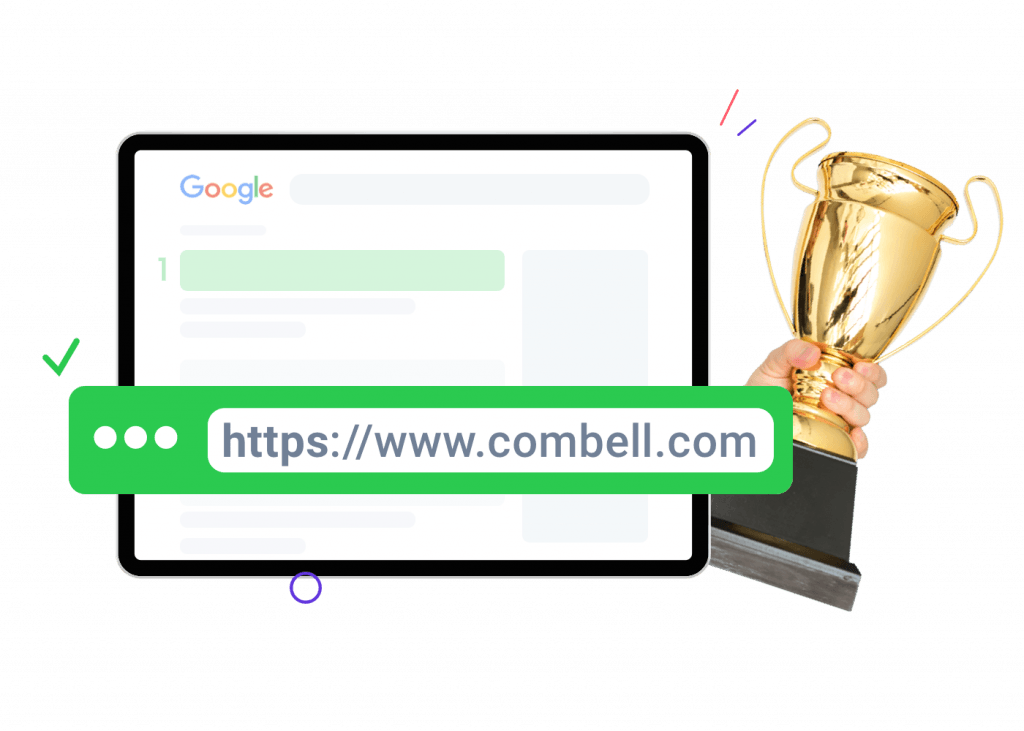
Google: the most important factor for SEO
For online stores, appearing at the top of Google’s search results is crucial—it's not just important, it's essential! In 2023, a staggering 91.7% of internet users turned to Google for information, leaving competitors like Bing and Yahoo far behind.
A study by Chitika Insights also revealed that the websites or webshops ranking highest in search results capture the majority of traffic. Only 4.80% of users click on results from the second page, and even fewer visit the third.
Even if your webshop is shining in the top search results, that doesn’t guarantee you’ll attract traffic. The first link in the results gets the most clicks, with the second result receiving more than half as many.
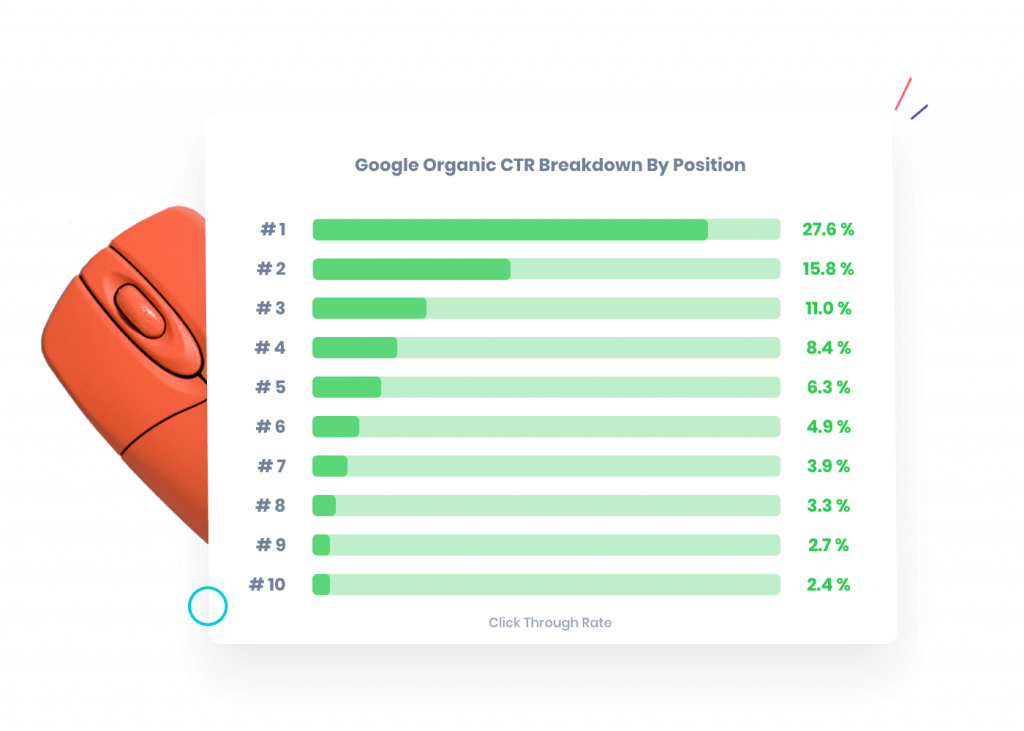
How SEO works: follow these four steps
To check and optimize your SEO settings, you can start by linking the right keywords to your webshop, regularly publishing (new) relevant content, improving your shop’s layout, and enhancing online security.
While your goal is to get your entire webshop ranked high in Google, each individual page—such as product pages, blogs, and contact pages—contributes to that success. Therefore, every page should be SEO-optimized.
To achieve these optimizations, SEO follows a few key principles:
1️⃣ On-Page SEO
This involves all improvements directly applied to your pages, making them immediately visible on your webshop. It includes adding relevant keywords, creating high-quality content, and optimizing your pages from a technical standpoint (such as responsive design, load speed, and HTTPS connections).
2️⃣ Off-Page SEO
This focuses on activities outside of your webshop to boost your ranking in search results. It includes leveraging social media, running marketing campaigns and ads, and building your online reputation, such as responding to reviews and feedback.
3️⃣ Link building
Technically, link building falls under off-page SEO. It’s a powerful strategy where you aim to get external, high-quality websites to link back to your site or pages. Link building increases your site’s authority, helping you rank higher in search engines.
Google views these links as endorsements, which signal the relevance and quality of your content. Link building happens organically, when other sites link to your high-quality content, and intentionally, through collaborations with partners, bloggers, etc.
4️⃣ Technical SEO
This focuses on improving the technical elements of your webshop that impact performance and accessibility for search engines.
These adjustments happen in the back-end of your webshop and are not immediately visible to customers, but they play a crucial role in enhancing your site’s rankings and visibility.
Here are some key aspects:
- Navigation structure: ensure a clear, logical, and user-friendly structure, allowing search engines to easily crawl and index your content.
- Sitemaps: use XML sitemaps to help search engines find all your webshop’s pages.
- Robots.txt: configure the robots.txt file to tell search engines which pages to crawl or not.
- Structured data and schema markup: add structured data to provide extra information to search engines about your content, which can result in richer search results (like rich snippets).
In the background, your SEO tools will work to influence the algorithms, crawlers, and databases that search engines like Google use to determine the relevance and value of web pages.
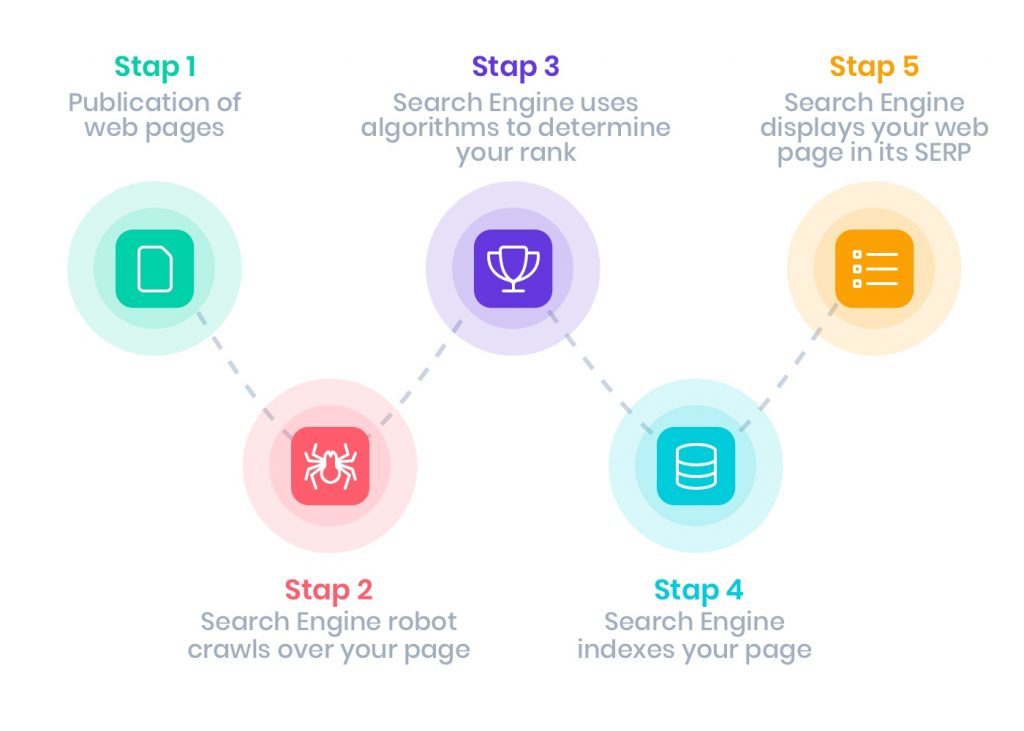
How SEO works behind the scenes
A glimpse behind the curtain!
➡️ Crawling and indexing
Crawling: Search engines use automated bots, known as crawlers or spiders, to scan the internet. These crawlers follow links from page to page to discover new or updated content.
Indexing: Once pages are found, they are analyzed and stored in the search engine’s index, a massive database containing information about all the crawled pages. During indexing, the page’s content, metadata, and other relevant details are saved so they can be quickly retrieved during a search query.
➡️ Algorithms and ranking
Although not much is known about the exact workings, search engines use complex algorithms to determine how pages are ranked in search results. These algorithms evaluate hundreds of factors, known as 'ranking factors,' which assess the relevance and quality of a page.
Also read
Some key ranking factors include:
- Relevant content: how well does the page content match the search query?
- Quality of content: is the content informative, well-written, and unique?
- User experience (UX): how user-friendly is the website? Consider factors like loading speed, mobile-friendliness, and navigation structure.
- Backlinks: what kind of and how many relevant sites link to your webshop? High-quality backlinks can increase the authority and trustworthiness of your pages.
➡️ Result display and optimization
When a user enters a search query, the search engine scans its index and uses the algorithm to display the most relevant and valuable results. This process happens in fractions of a second!
Some results might include extra information like reviews, images, or direct answers to questions, which come from structured data on the webpages. You can optimize for this through SEO, keeping these factors in mind.
Search engines like Google continually update and improve their algorithms to make search results more relevant and useful. This means SEO strategies need constant adjustments as well.
➡️ Local SEO and personalization
For searches tied to a local context, like "restaurants nearby," search engines use location data to show results that are literally and figuratively close to the user.
Search engines also consider user history, location, and preferences to personalize (local) search results.
Tip
To rank better in local search results, you can build local backlinks by getting your webshop listed in local business directories, collaborating with local bloggers and influencers, and participating in local events. You can also sponsor local initiatives, send press releases to local news outlets, or partner with other local businesses.

Webshop SEO: tips to use right away
To succeed with SEO for your webshop, you need to focus on both search engine algorithms and, more importantly, the search behavior of your customers. These tips will help you get started with SEO!
✓ Tip: start with keyword research
Just launched your webshop? The first step is conducting keyword research. This helps you discover the key terms potential customers are using.
When performing keyword research for a webshop, remember that your focus should be on commercial keywords. Customers searching to buy will use terms like "Purple summer pumps" rather than "How to break in new pumps." Your keywords should reflect these buying intents.
How to begin your keyword research
You don’t need complex tools to start. Simply begin by Googling. When you start typing a search term in Google, the search engine will complete it with suggestions—this is called autocomplete.
Once you're on the results page, you’ll often see related search terms, which can be useful for your research. These are connected to your original query and can give you more keyword ideas.
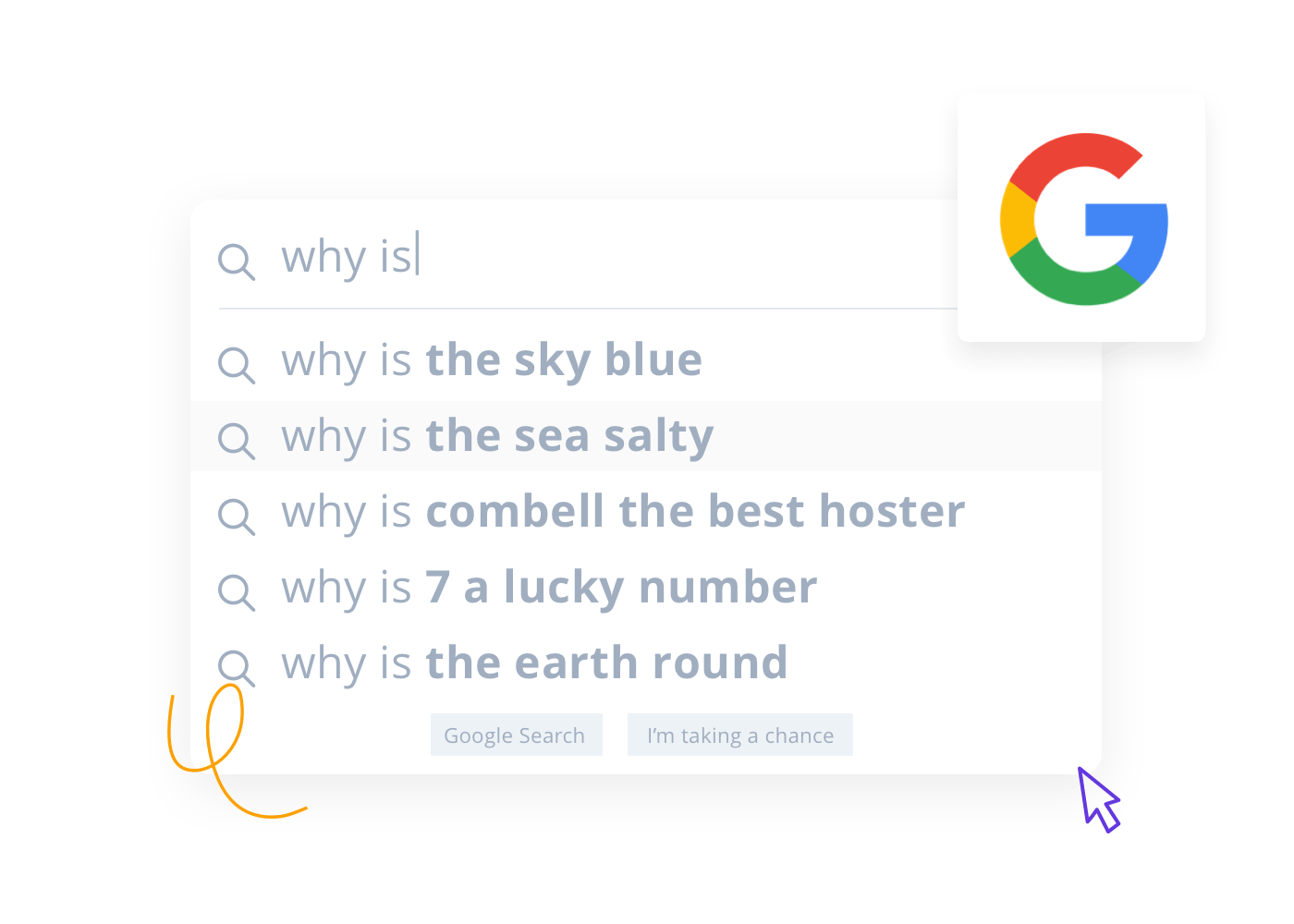
For example, if you own a plant shop in Ghent, try searching for relevant terms. Take note of suggestions that appear and related keywords displayed on the results page. You can apply this strategy to larger e-commerce sites like Bol and Amazon as well. Check what products their customers are searching for to get insights into commercial search queries.
It's okay to "borrow" ideas
Explore product categories on larger webshops. How do they organize their categories? Do you fit into a subcategory with your products? If so, you can use those categories on your own pages.
Importance of long-tail keywords
Long-tail keywords are search terms with three or four (or more) words, like "Handmade pots for indoor plants." If you sell such products, this could be a highly valuable long-tail keyword.
Long-tail keywords are often linked to informative searches or content.While commercial keywords are crucial, creating content around long-tail keywords shows your expertise and attracts more visitors. Additionally, it's often easier to rank higher for long-tail keywords in Google.
By providing articles or other informative content tied to long-tail keywords, you demonstrate knowledge and authority in your field. This not only draws in more customers but also boosts your chances of ranking higher for these longer, more specific search terms.
Tip
If you want to accelerate your keyword research, tools like Google Keyword Planner can help. Alternatively, you can use the free (but limited) Ahrefs keyword tool.
Volume and competition
The more thorough your keyword research, the more keywords you’ll gather. The next step is deciding which terms you should focus on for your webshop.
Volume matters. The higher the search volume for a term, the more potential visitors you can attract. The downside? Competition—if a term is popular, you're likely not the only webshop targeting it. In general, the less competition, the better.
However, even while you're deep into keyword research, don’t forget the relevance of your products and pages. No matter how popular a keyword is, if your offerings don’t align with it, it won’t make sense to target that term.
Tip
There are various tools (both free and paid) that show the search volume of keywords. We recommend SEMRush and Google Keyword Planner.
✓ Tip: create the right page layout
It's simple: both your customers and search engines appreciate structure and clarity. Don’t turn your webshop into a confusing maze, but rather a well-organized shop where everything is easy to find. Base your structure on the results of your keyword research, for instance, by using clustered keywords.
While a clear homepage is always essential, your product pages are the most critical. Make sure visitors can easily navigate from the homepage to the product pages with minimal effort.
Each extra click increases the chance that customers will drop off and leave the site. Additionally, a complex navigation system can weaken the link equity (link juice) from your homepage to your product pages. A well-organized internal linking structure helps both visitors and search engines quickly find the most important pages.
If you're planning to build your webshop yourself and want to ensure it’s SEO-friendly, consider using website builders like SiteBuilder (for true beginners) or WordPress (for those with a bit more IT skills). Both tools help you create the perfect online shop!
Both SiteBuilder and WordPress offer helpful tools to improve your SEO:
✓ Tip: make your webshop pages SEO-friendly
Next task: optimize your product pages (and any other pages with relevant content) to improve your search rankings. Many webshop builders and CMS platforms provide tools to enhance SEO settings—so make sure to use them!
Incorporate relevant keywords for your webshop in title tags, such as meta titles and meta descriptions, as well as in the alt-tags of images. Alt-tags are short descriptions of what’s depicted in the image. Another useful trick is to include keywords in your file names and create SEO-friendly URLs for your pages.
Whether you sell products or offer services, describe them as thoroughly as possible on your (product) pages. Detailed and unique product descriptions are an excellent way to get noticed by search engines. You can also include internal links within these descriptions, linking to similar products.
Adding important keywords in these descriptions not only improves SEO but also satisfies customers who appreciate detailed information. After all, everyone likes to know exactly what they’re buying. 😉
✓ Tip: use Google My Business
Want to rank higher in local search results? Link your webshop to Google My Business, your free business profile on Google. This helps Google direct potential customers to your online store. You can share key business details, add photos, and show that your business has an online shop.

✓ Tip: Start a blog
Google loves relevant content and webshops that are regularly updated. It’s not always easy to come up with new content, but starting a blog is a great way to keep your site fresh. Regularly publishing articles will help drive more traffic to your website and increase your online visibility.
By writing blog posts that closely align with what your customers are searching for, you’ll eventually be seen as an expert in your field. Readers who find your blog through relevant keywords are more likely to be interested in what you have to say. Just make sure to strategically incorporate those keywords into your blog posts. 😉
✓ Tip: build an internal link structure
You can also incorporate internal links in your articles. Setting up an internal link structure is crucial for SEO, as it enhances the structure and usability of your webshop.
Internal linking keeps customers on your site longer, increasing the chances that they’ll make a purchase—if done correctly. Balance is key though; too many internal links can overwhelm visitors. Place them only where they’re relevant.
Anchor text plays a crucial role in internal linking. It helps Google better understand which page should rank for specific keywords. Anchor text is the clickable, visible text of a hyperlink that provides information to both search engines and users about the linked page's content.
Internal linking example
Imagine you run an online plant shop. Your homepage ranks well on Google for "Buy indoor plants." You could create a product page titled "Non-toxic indoor plants" and then write a blog post titled "Which indoor plants are safe for children?" In this blog, you can link to your "Non-toxic indoor plants" category using that exact phrase as your anchor text.
Struggling to Publish Blog Articles Consistently? Create a content calendar or content plan. A clear schedule will make it much easier to regularly produce and publish blogs. Our colleagues at Flexmail can guide you on how to develop a content strategy.
Also read
Why starting your own blog is a great idea.
✓ Tip: build a mobile-friendly webshop
Let’s face it—our smartphones are glued to our hands these days, and we search for nearly everything online via mobile. It’s only logical that your webshop should look just as good on a small screen as it does on a desktop.
If your online store doesn’t perform well on mobile devices, you’ll lose visitors—and customers. On top of that, Google penalizes non-responsive webshops!
Google has introduced mobile-first indexing, which affects how your webshop’s content is indexed and ranked in search results, with a focus on the mobile version of your site.
In the past, Google evaluated the desktop version of a website to determine rankings. With mobile-first indexing, the emphasis is now on the mobile version. This means Google prioritizes mobile user experience when ranking your site in search results.
Don’t worry! We’ll explain exactly what you need to focus on to make your webshop mobile-friendly. Get started right away with all our tips.
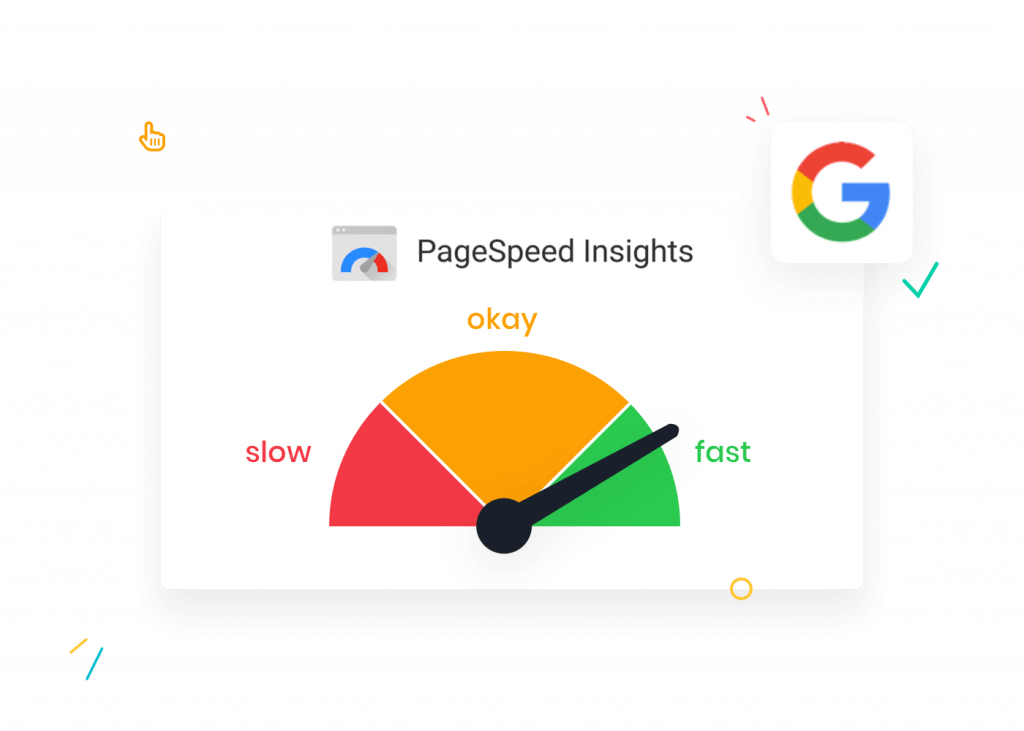
✓ Tip: choose only top-quality hosting
Your hosting provider plays a significant role in your webshop’s SEO performance. A professional hosting company ensures your site’s security, loading speed, and overall performance—three key factors that search engine algorithms prioritize. Did you know that even the location of your hosting servers can impact SEO?
Google prefers not only well-structured webshops but also those with a secure HTTPS connection. For this, you’ll need an SSL certificate.
Websites without SSL will rank lower in search engine results, a major disadvantage! Webshops with SSL certificates display a gray padlock in the address bar of Google Chrome, Google's browser. Without an encrypted connection, visitors may see a warning screen before entering your site.
Another important factor for SEO success: the loading speed of your webshop. The faster your site, the higher it will rank!
Fast, technically optimized websites perform better in Google’s search results, while slow sites are penalized and ranked lower.
✓ Tip: dare to analyze and adjust
Once you’ve set everything up, it’s crucial to measure and analyze the effects of your SEO efforts. After gaining insights, you can fine-tune your strategy by making additional optimizations.
To conduct these analyses, you can use several tools:
- Google Analytics provides detailed insights into traffic sources, user behavior, and conversions, allowing you to see how visitors find and interact with your site.
- Google Search Console helps you understand how your site performs in search results, offering data on search queries, click-through rates, and technical issues.
- SEO tools and plugins (for WordPress) such as Ahrefs, SEMrush, and Yoast SEO can help you identify optimization opportunities, track rankings, and improve your shop’s technical SEO aspects.

Webshop SEO: mistakes you must avoid
Investing in webshop SEO optimization is a smart move, but there are common mistakes that can hurt your rankings.
One frequent error is publishing duplicate content. This can confuse search engines about which version of a page is most relevant, leading to lower rankings and reduced visibility in search results.
Search engines don’t want users to see the same information repeatedly. Duplicate content can also dilute link equity across multiple URLs, reducing your SEO effectiveness and harming the authority of your webshop. Instead, focus on creating unique and valuable content for each page.
Keyword Stuffing?
Have you heard of keyword stuffing? It’s something to avoid at all costs. Keyword stuffing refers to overloading a webpage with the same keyword. Don’t just sprinkle your main keyword everywhere on the page.
Search engines frown upon this. Today’s algorithms are sophisticated enough to detect it as a manipulative tactic to artificially boost rankings. In extreme cases, search engines like Google or Yahoo may penalize your site by lowering your ranking or even removing it from search results entirely! 😮
It’s crucial to naturally integrate keywords into your content so that it remains relevant, readable, and provides a good user experience.

